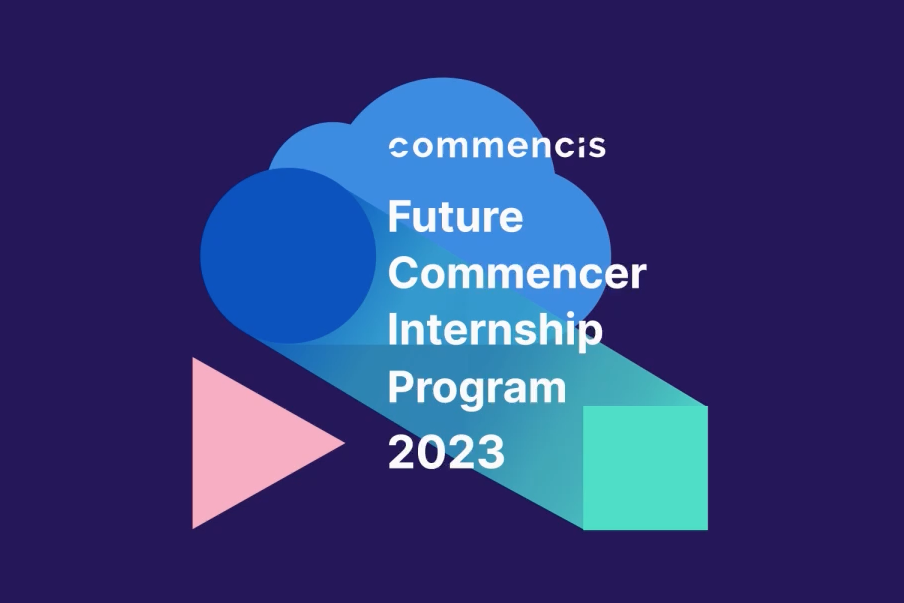Tips for Contributing to Environmental Health by Reducing Plastic Consumption
Tips for Contributing to Environmental Health by Reducing Plastic Consumption
The wellness trend has been quite popular in the last few years. Wellness is often described as being healthy and not being in an ill state. On the other hand, new holistic wellness approaches focus not only on being healthy but also on making choices that yield a healthy, active, and fulfilling life. Therefore, we can say that our wellness does not only depend on our physical wellbeing, but it also involves emotional, social, occupational, spiritual, and environmental wellbeing. To be more precise, environmental wellbeing focuses on the things that surround us and promotes to lead a life that is respectful to its environment. Water conservation, reducing carbon emissions, minimizing plastic consumption, and food waste can be seen as activities that will contribute to one’s environmental wellbeing.
COVID-19 has been a milestone for many of us to understand the damage we were causing on our planet. One of the biggest environmental problems of today’s world is single-use plastics. Unfortunately, the significant increase in personal protective equipment made the big single plastic use problem even bigger. Single-use plastic masks take up 450 years to decompose in nature, whereas surgical gloves take up to 100 years and plastic bags can take 20 years, but no one really knows how long plastics can remain in the ocean. Furthermore, the process of plastic degrading is also problematic. While degrading, all size fractions are released and end up in the soil and open waters, polluting nature. Consequently, nature is filled with microplastics. Microplastics are found on the top of Everest, in the stomachs of whales and it has been recently found that microplastics are even in the feces of humans. There are some studies that show that people eat around 250 grams of microplastics per year which equates to the size of 10 credit cards. This has a drastic effect on our future health, and it is a great threat to the environment as well.

Even though we must acknowledge the fact that the plastic crisis’ solution requires bigger initiatives from the governments and big corporations, we shouldn’t overlook the possible contribution of individuals possible contribution to the solution of the plastic crisis. Design, easy access to knowledge and technology can promote recycling, repurposing, reusing, and reducing plastic waste on an individual level. This change in individuals’ behavior can eliminate the negative effects, current and future consequences of single-use plastic consumption.
The biggest problem with plastics, especially single-use plastics, is that the user cannot understand the ‘actual’ amount of plastic consumption. Enabling users to understand how big the waste they are producing can be an approach to increase awareness towards plastic consumption. Quantified self can be used as a tool to make people understand how much plastic waste they are producing. The quantified self is a method that aims to change the behavior of individuals by tracking their data. As mentioned above, if individuals are not aware of the amount of plastic waste they generate, this method can help them to understand their effect in a quantitative way and therefore lead them to take action. One of the best examples of quantified self is the step counters on our mobile phones or smartwatches. Being able to track daily physical activity makes individuals more aware of their physical activity and leads them to take action to become more physically active. If we use the same logic, quantifying the plastic waste one generates would increase the awareness of the one towards single plastic usage and therefore result in a behavior change which is consuming/repurposing the single-use plastics.

Currently, there are different apps and websites which use semi quantified-self methods to increase awareness about plastic usage among the users. They try to quantify the amount of consumption by asking users some questions or allowing them to track their data manually. The plastic footprint calculator is such an example of the former one. This website is a good starting point for people who want to learn to know more about the ‘plastic problem’. The website offers an easy-to-use calculator, directs the user to similar calculators (carbon footprint, covid-19 waste, etc..), and an explanatory article about plastic consumption and their side effects on our planet with useful further readings. The calculator provides a wide range of single-use plastics in the calculator, the user needs to fill in the details about their amount of consumption and the timeframe they are referring to. The calculator shows the users their annual average consumption and how much they will consume over their lifetime if they keep their consumption habits as they are. For results to be more insightful, the website provides a comparison of user’s lifetime consumption to countries’ consumption, yearly consumption of the user to the average usage of plastic of people from different countries. Even though the website provides results based on the answers of the users, seeing the effects of your daily coffee bought from a third-wave coffee shop leads you to think about the consequences of your impulsive actions.

Plastic Footprint Calculator
An example of the latter technique is the My Plastic Diary app. The user journey in the app starts with setting a target for plastic consumption. The average plastic usage per year is shown to the user to let them set a feasible goal. The user can adjust the amount of their target plastic consumption, seeing how ambitious their goal is (e.g., if you set up your limit to 5 kg per year, it means you are an expert when it comes to plastic consumption). After the user sets the limit for plastic usage, My Plastic Diary asks users to enter their plastic consumption manually. A wide range of plastics is shown under different categories & subcategories from which the user can choose. Then the user needs to enter the amount of plastic. The user can track their consumption daily, monthly, and yearly, and see where they are compared to their yearly target. The app also allows users to compare their level of plastic usage with their friends & family. Overall, My Plastic Diary has a good starting point to actualize quantified self and decrease users’ plastic consumption. Furthermore, the competition among the users will sure increase user engagement of the existing users and initiate them to invite more users to the app. On the other hand, tracking the plastic waste manually requires real hard work and dedication of the users. Considering that, it wouldn’t be wrong to assume that the number of users of the app will be very limited.
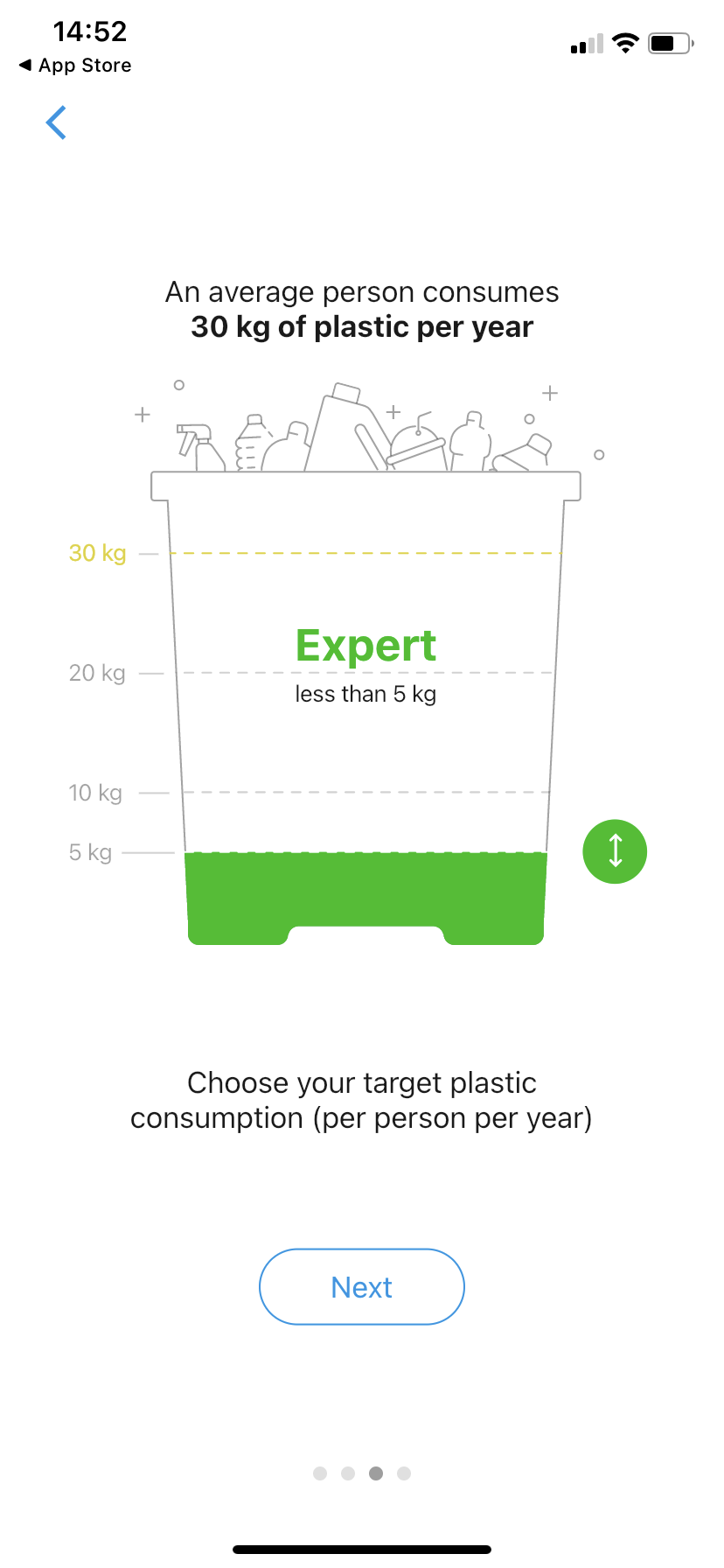
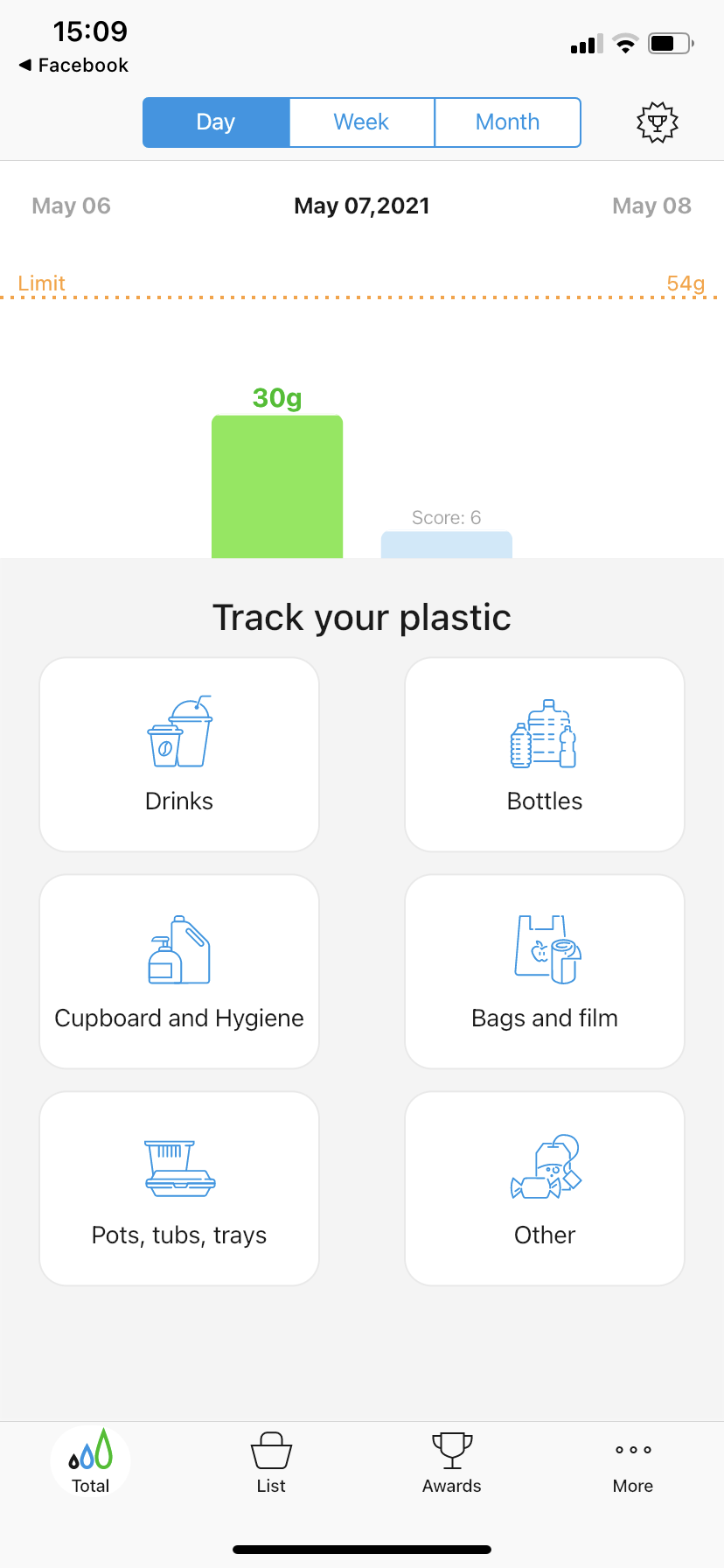

My Plastic Diary App
Currently, there are no solutions that offer full automatization of plastic waste tracking for individual purposes. A road to fully automatize tracking plastic waste may be achieved by using smart waste segregation bin technologies. Bin-e can automatically recognize the type of waste and then segregates it into the right fraction by using artificial intelligence algorithms. This technology can also communicate with mobile devices for functions like notifying which fraction is about to be filled and informing waste management companies about disposal. If we start to see this technology more often in offices, public spaces, and houses, it may be possible to quantify people’s waste in an effortless and correct way. Visualizing the amount of waste and seeing the numbers instantly are likely to promote a behavior change in people. Confronting the data collected from the bin will eventually increase the public’s awareness and lead people to take more effective actions towards plastic consumption.
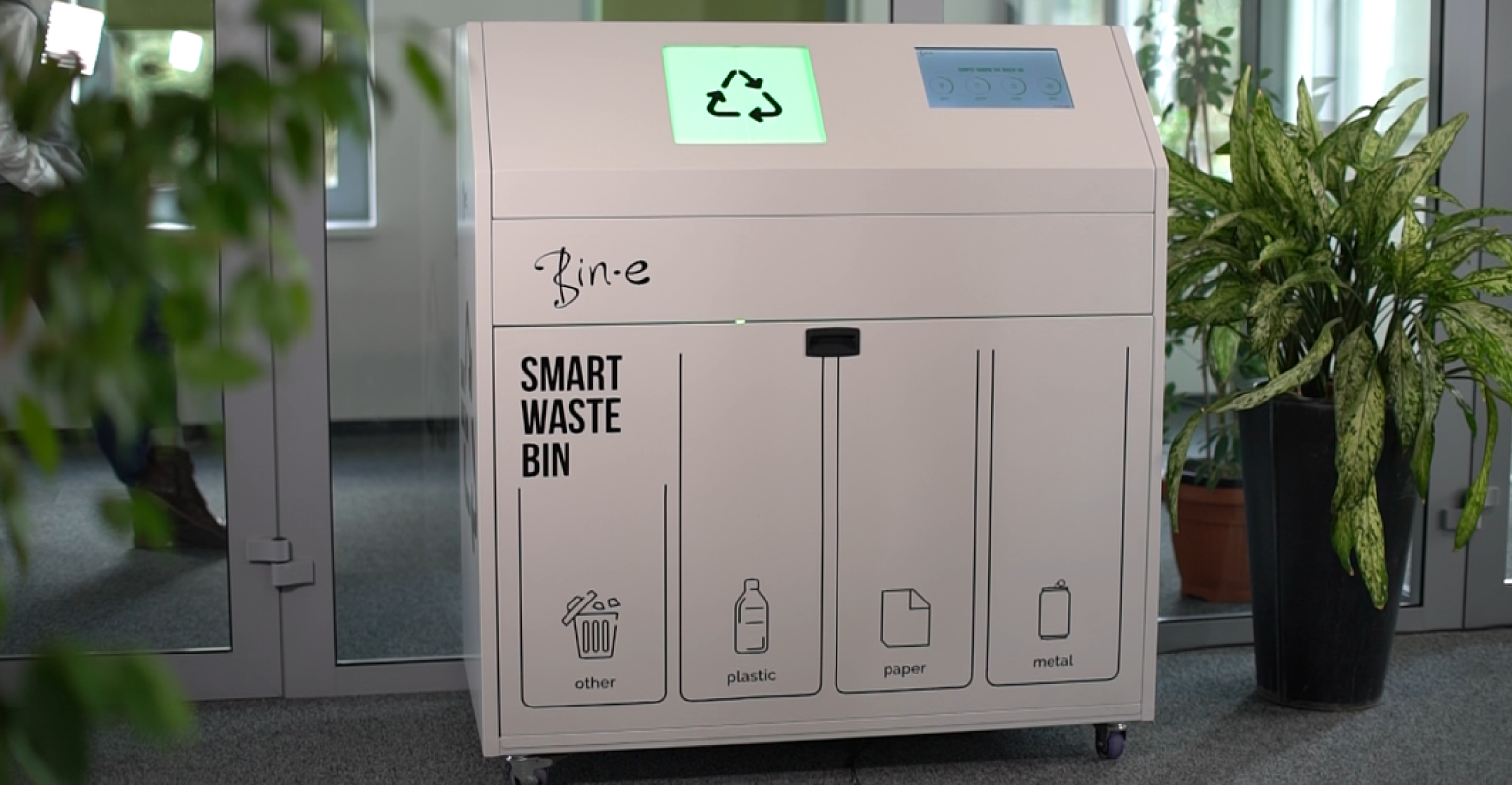
Bin-e
Another problem related to plastic consumption which can be tackled with design and technology is the lack of knowledge about preventing plastic usage. Even though recycling and repurposing plastic waste are great methods for a sustainable life, the greatest way is to reduce or prevent plastic consumption. For starters, this may seem complicated, and they may find it hard to start from somewhere. My Little Plastic Footprint helps people to find themselves a starting point to reduce plastic usage. The app asks the user their age, gender, country to calculate their Plastic Mass Index (PMI). PMI is a measure to calculate your personal contribution to plastic pollution. After answering these questions, the app asks users to choose the plastic products they have given up using. Depending on all the information the user entered, the app calculates the user’s PMI. Afterward, the app offers categories (e.g kitchen, cosmetics…) in which you can check whether your current products are micro-plastic-free or where you can find sustainable and plastic-free substitutes. Furthermore, there is useful information about the materials in general, how you should wash your clothes, how to increase the lifetime of your current plastic products. Finally, the user can take quizzes about plastic-issue in general, share their results on social media and increase their knowledge about the topic in general. My Little Plastic Footprint is a comprehensive hub for people who want to change their lifestyle into a plastic-free one. Information about a relatively complicated topic is shown to the users in an easy-to-understand way by its simple and illustrative visual style.
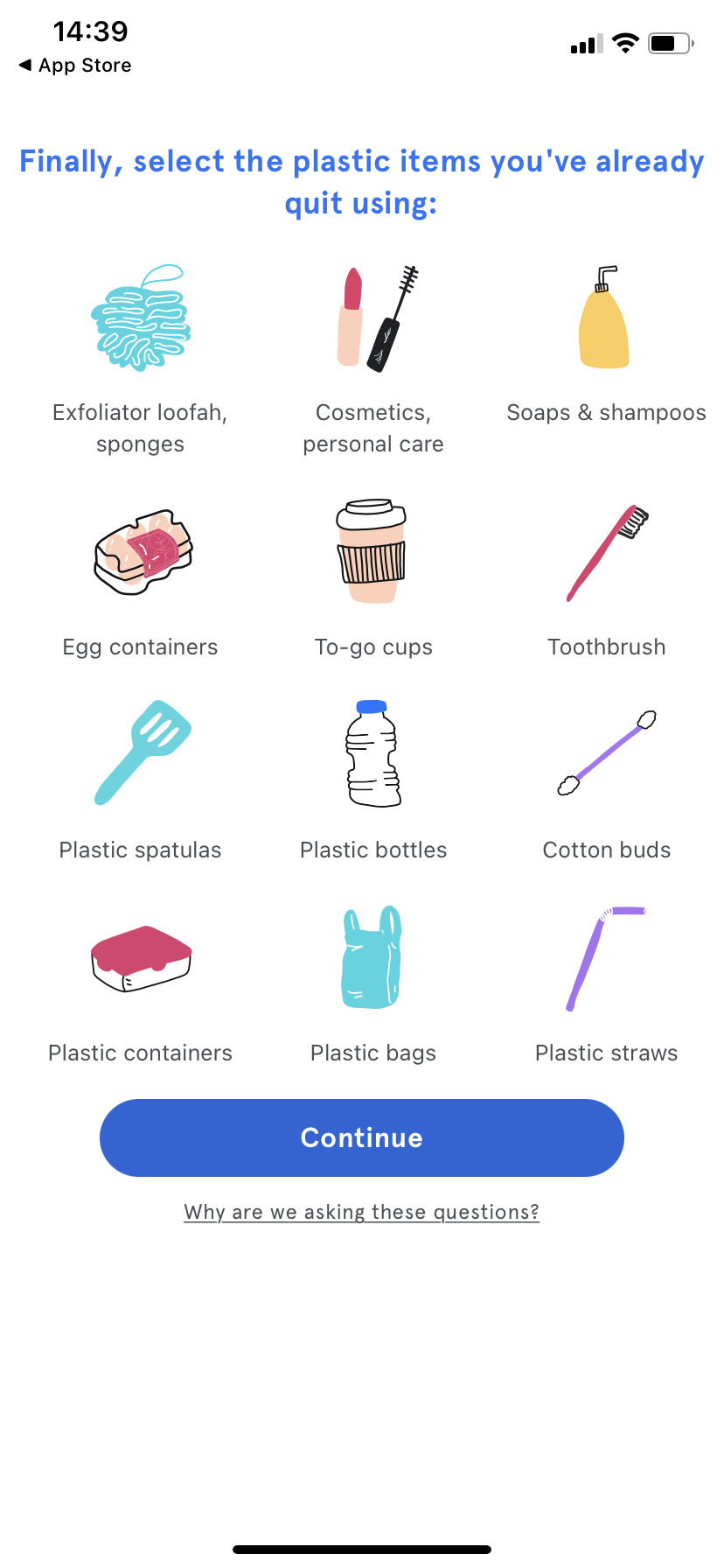
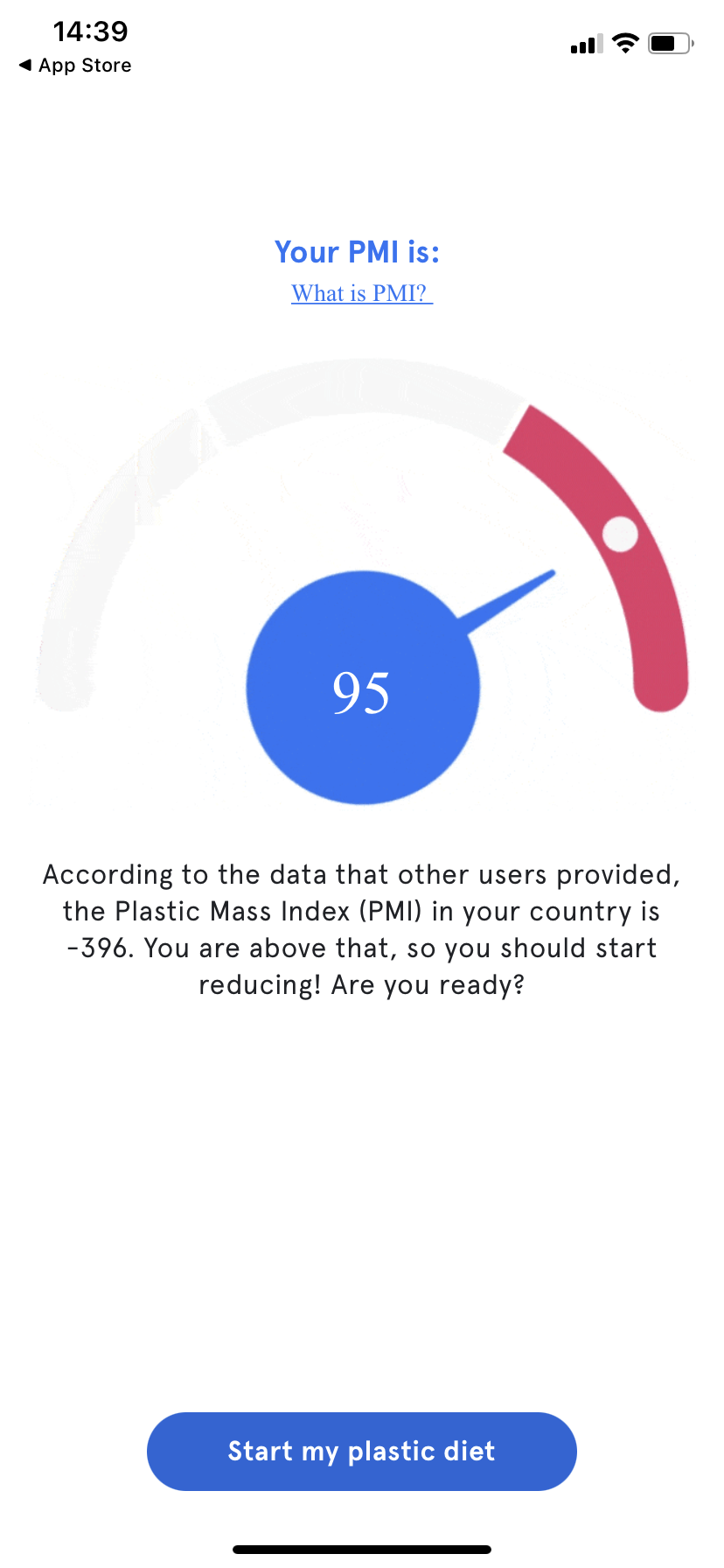
My Little Plastic Footprint App
To sum up, reducing plastic consumption is not only good for our environment but it is also good for our mental well-being. A study showed a correlation between happiness and actions that reduce the amount of garbage the individual produces, such as buying products in refillable packages and looking for ways to reuse things. Everything shows us that we must accept the fact that we cannot keep using plastics like we are used to. We must consider decreasing the amount of plastic we are using significantly and recycle. The effort put in these actions is trying to be minimized by design and new technologies, but we cannot say we have a perfect solution for it yet, but still, the future looks promising.
Reading Time: 6 minutes
Don’t miss out the latestCommencis Thoughts and News.



